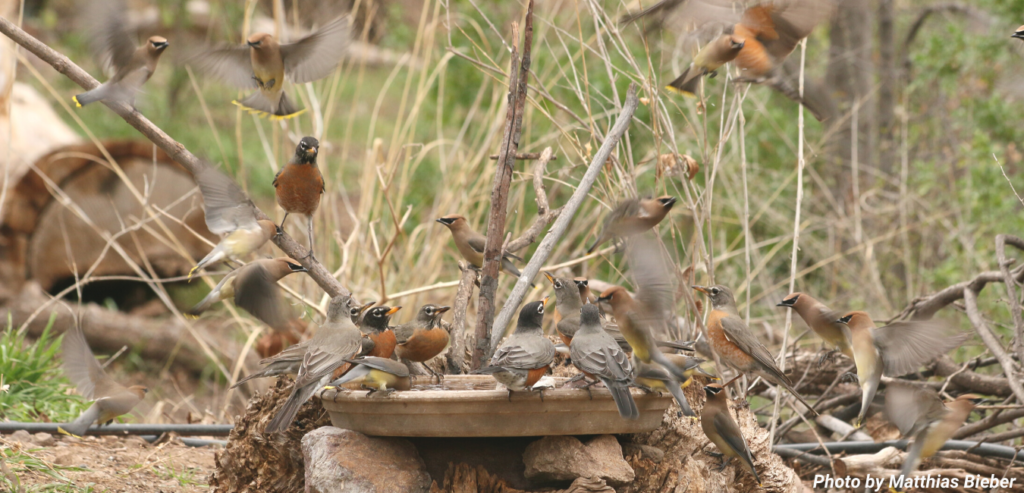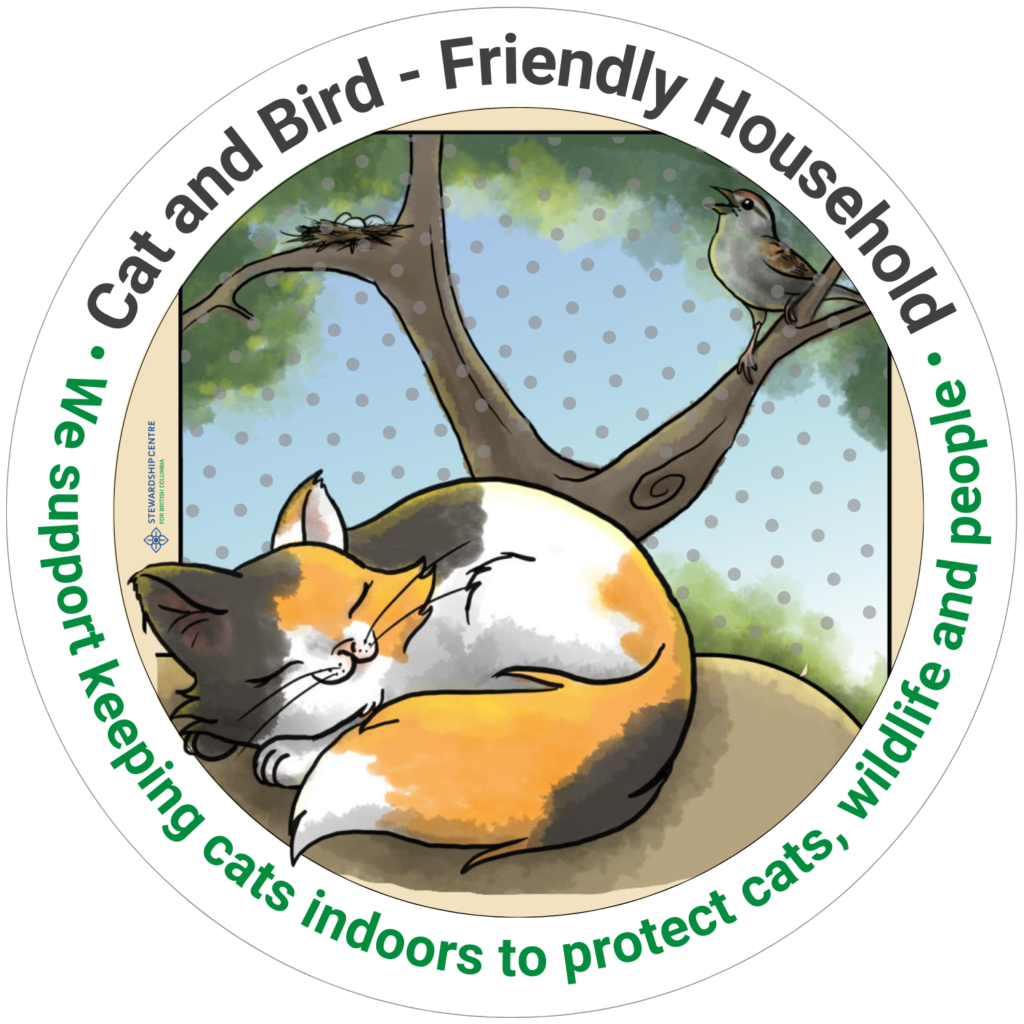Cats and Birds | Bird Feeding
How to help conserve birds while bird feeding

- Plant a variety of native plants and nectar-bearing flowers in your backyard
- Monitor your feeder regularly and contribute to citizen science through day-to-day observations
Birdscaping and bird-friendly gardens
Outside of bird feeding, you can also provide resources and habitat for migratory birds travelling through your area. Food, shelter, and water are necessary for birds en route to and from their winter grounds.
- Plant native perennials and nectar-bearing flowers
- Make your garden safe to birds by planting shrubs that provide hiding and nesting spots as well as natural cover from precipitation and wind
- Don’t forget about water! Choose birdbaths that are shallow and wide. Set up your birdbaths and waterer low to the ground or slightly elevated, ensuring no leaves or other debris accumulate in a water dish. Keep water clean and warm during the winter! Find tips here and here.
- Nesting material is as important as food. Birds tend to use lichens, twigs, pine needles, dry grasses, plant fluff and bark strips for building nests. Learn more about natural soft materials you can provide for birds in your garden.
- More bird-friendly garden info on BC SPCA web.

Share your observations
Having a feeder allows you to learn more about local birds, their behaviour and seasonal fluctuations in bird activity. Keeping track of visiting birds will not only enhance your knowledge of local avian communities but also provide valuable data about bird populations in your region.
- Keep track of bird species coming to your feeder and notice differences occurring from year to year
- Join a FeederWatch project with Birds Studies Canada to share your observations and learn more about general trends in bird populations
To learn more about ways you can help birds, visit our Cats and Birds – Helping Birds page.




